
Expansion of SFMOMA in San Francisco by Snøhetta
After the completion of the new building of the Museum of Modern Art in San Francisco in 1995, the number of members and visitors tripled. The intention for further expansion of the museum by Swiss architect Mario Botta was expressed in April 2009, and in July 2010, the jury selected a competition project from the Norwegian firm Snøhetta, whose design emerges like a white glacial wall behind Botta's late-postmodern building, creating a neutral background for it. The new extension seeks to distinguish itself from the original museum in terms of height, proportions, and choice of materials. The perforated glass façade stands in stark contrast to Botta's brick facades. However, both buildings must communicate with each other through a series of passages, staircases, and ramps, creating various internal courtyards and atriums between them. The reason for Snøhetta's victory in the competition was primarily the excellently thought-out operational scheme between the two buildings, which is intended to serve not only the museum's visitors but also to enhance the surrounding life in the entire neighborhood.
Efforts to accelerate the construction were aided last February by a donation from donors Don and Doris Fisher, who gifted the museum around 11,000 art objects. In April 2011, the budget for the 225,000 square foot (almost 21,000 m²) building jumped by 70 million and significantly exceeded half a billion dollars. Currently, negotiations are underway regarding a new entrance to the museum from the east side and a new pedestrian pathway behind the museum. The completion of the extension is scheduled for 2016.
More information >
"Our design for SFMOMA responds to the unique demands of this site, as well as the physical and urban terrain of San Francisco. The scale of the building meets the museum's mission, and our approach to the neighborhood strengthens SFMOMA's engagement with the city. Pedestrian routes will enliven the streets surrounding the museum and create a procession of stairs and platforms leading up to the new building, echoing the network of paths, stairways, and terracing that is a trademark of the city.
SFMOMA sparked the dramatic transformation of San Francisco's South of Market district when it transformed a run-down neighborhood into a cultural anchor for the city in 1995. After 15 years on Third Street, SFMOMA is now further invigorating the city by opening up a place that has been out of sight and out of mind.
SFMOMA's expansion will enliven the neighborhood through a generous plan that frees connections between well-known surrounding streets and more hidden urban spaces. The building will encourage people to enjoy the intimate small streets as much as the heavily used thoroughfares of the district. The new building does not push tightly against its property lines; instead, it creates new public spaces and pedestrian routes through the neighborhood along with open views of the surrounding streetscape. By organizing the complex configuration of the museum's expansion site into a unified whole, the new SFMOMA will promote connections to portions of the city that are already becoming more publicly accessible with the construction of the new Transbay Transit Center. Having been a partner to the creation of the cultural hub around Yerba Buena Gardens, SFMOMA will now further enliven the entire neighborhood as an urban destination.
Formally, the new SFMOMA is designed to engage with the skyline that surrounds it. Its sculptural identity is found in a formal language that embraces and invites the silhouettes of its neighbors to participate in the dialogue of the new urban identity of South of Market. SFMOMA's new, low slung shape will create a horizon in the skyline that connects rather than segregates the different parts of the city that border it.”
Efforts to accelerate the construction were aided last February by a donation from donors Don and Doris Fisher, who gifted the museum around 11,000 art objects. In April 2011, the budget for the 225,000 square foot (almost 21,000 m²) building jumped by 70 million and significantly exceeded half a billion dollars. Currently, negotiations are underway regarding a new entrance to the museum from the east side and a new pedestrian pathway behind the museum. The completion of the extension is scheduled for 2016.
More information >
"Our design for SFMOMA responds to the unique demands of this site, as well as the physical and urban terrain of San Francisco. The scale of the building meets the museum's mission, and our approach to the neighborhood strengthens SFMOMA's engagement with the city. Pedestrian routes will enliven the streets surrounding the museum and create a procession of stairs and platforms leading up to the new building, echoing the network of paths, stairways, and terracing that is a trademark of the city.
SFMOMA sparked the dramatic transformation of San Francisco's South of Market district when it transformed a run-down neighborhood into a cultural anchor for the city in 1995. After 15 years on Third Street, SFMOMA is now further invigorating the city by opening up a place that has been out of sight and out of mind.
SFMOMA's expansion will enliven the neighborhood through a generous plan that frees connections between well-known surrounding streets and more hidden urban spaces. The building will encourage people to enjoy the intimate small streets as much as the heavily used thoroughfares of the district. The new building does not push tightly against its property lines; instead, it creates new public spaces and pedestrian routes through the neighborhood along with open views of the surrounding streetscape. By organizing the complex configuration of the museum's expansion site into a unified whole, the new SFMOMA will promote connections to portions of the city that are already becoming more publicly accessible with the construction of the new Transbay Transit Center. Having been a partner to the creation of the cultural hub around Yerba Buena Gardens, SFMOMA will now further enliven the entire neighborhood as an urban destination.
Formally, the new SFMOMA is designed to engage with the skyline that surrounds it. Its sculptural identity is found in a formal language that embraces and invites the silhouettes of its neighbors to participate in the dialogue of the new urban identity of South of Market. SFMOMA's new, low slung shape will create a horizon in the skyline that connects rather than segregates the different parts of the city that border it.”
Craig Dykers, Snøhetta principal architect
The English translation is powered by AI tool. Switch to Czech to view the original text source.
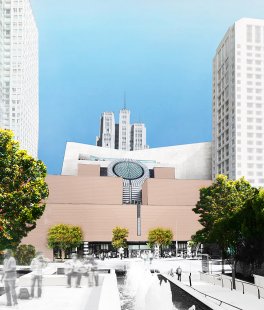
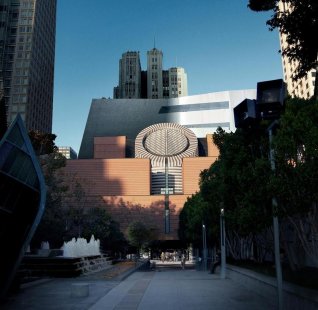
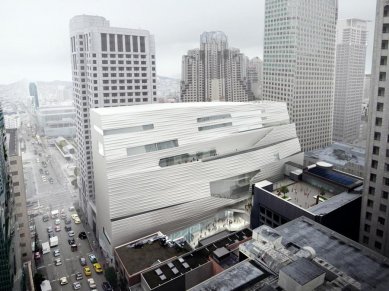
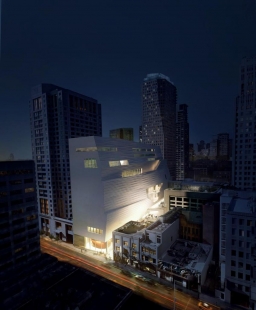
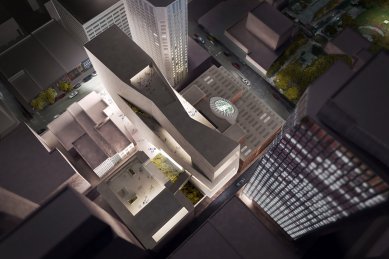
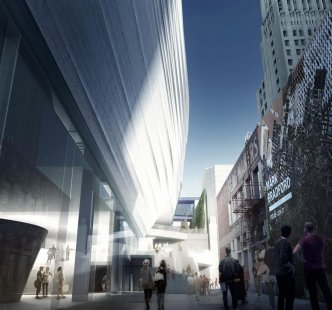
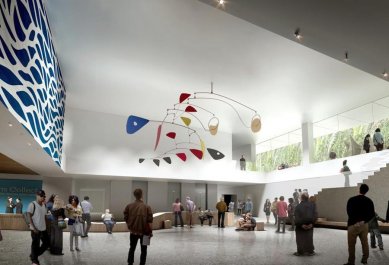
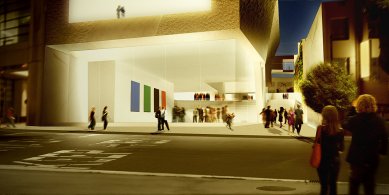
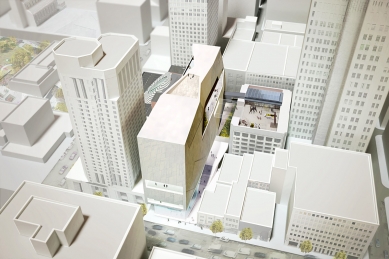
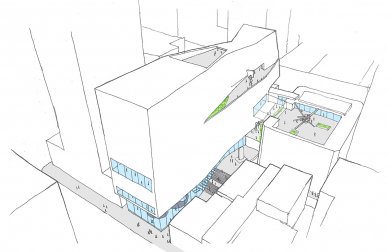
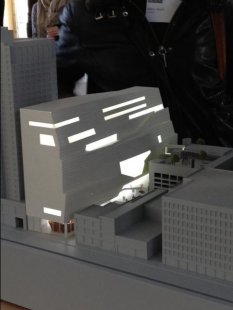
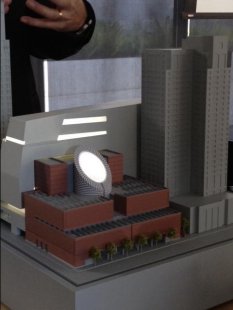
0 comments
add comment
Related articles
2
12.06.2013 | Basketball stadium in San Francisco by Snøhetta
0
09.11.2012 | Visitor Center of the Lascaux Cave by Snøhetta
1
10.01.2012 | Mario Botta will miss his staircase after the SFMOMA renovation
0
04.03.2010 | <translation>Marine Research Center in Trondheim by Snøhetta</translation>
0
29.08.2007 | Summer Pavilion Serpentine Gallery in London by Snøhetta












